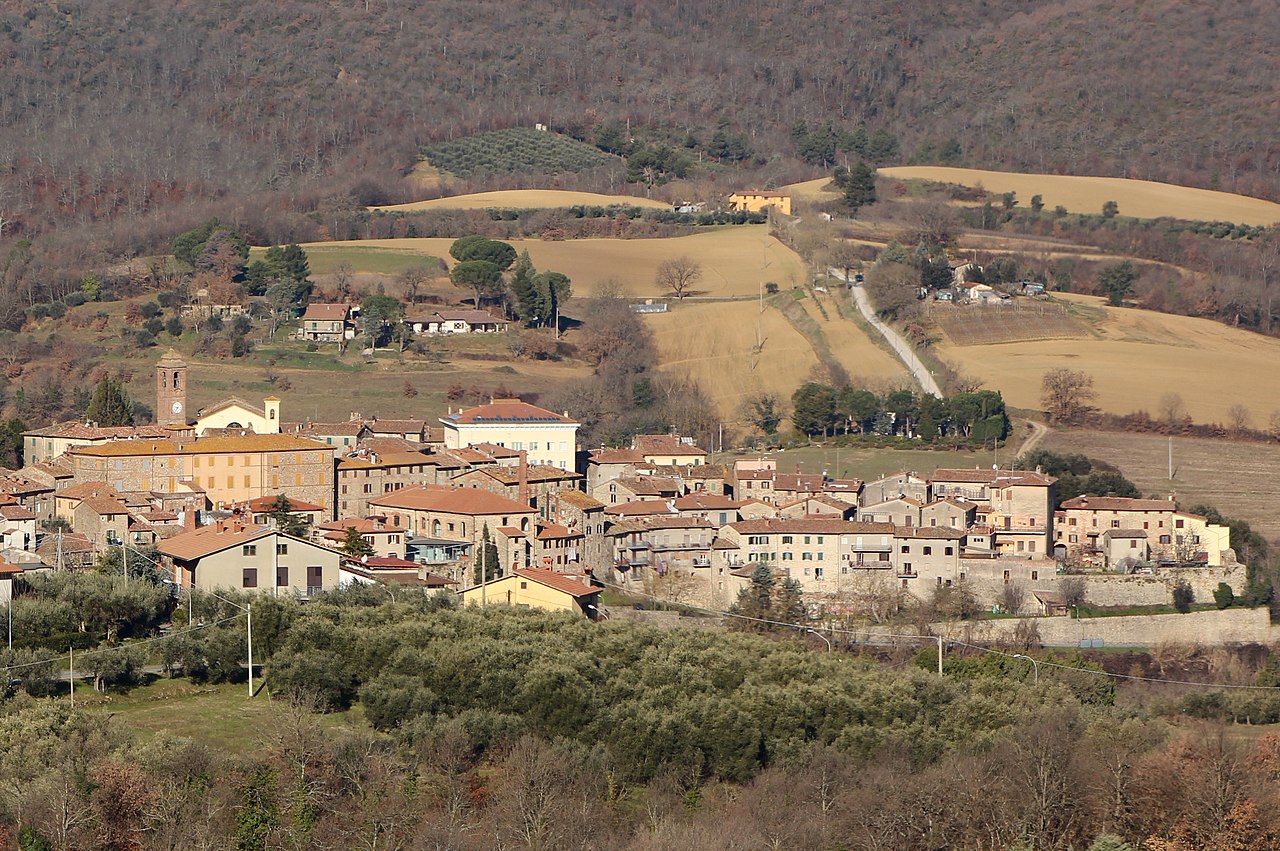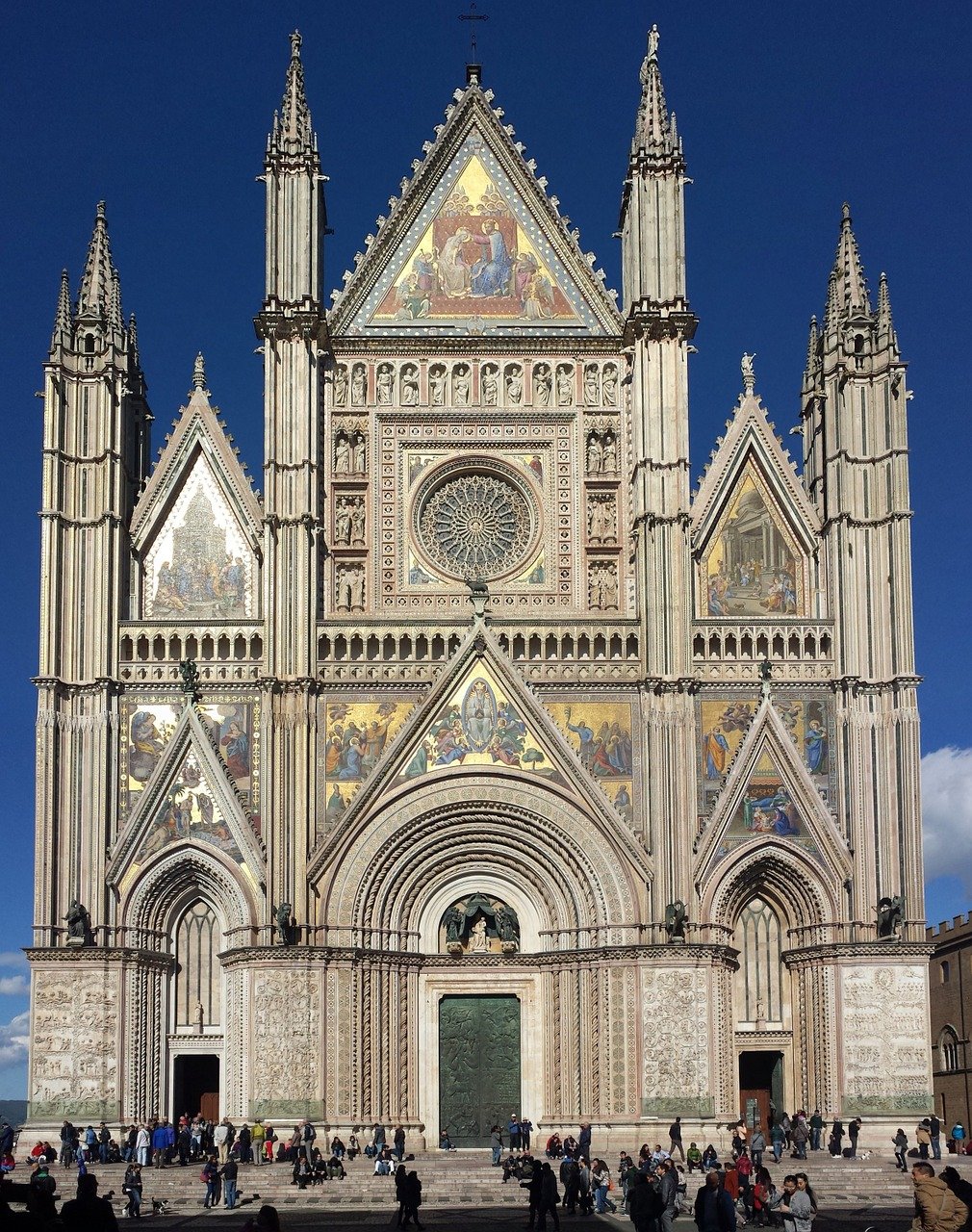Venice to Piegaro: A Daring Escape
In 1292, the rulers of Venice decreed all glass blowing would move to the island of Murano to protect the city from fires created by the furnaces in the glass workshops. Subsequently, the artists became virtual prisoners to their craft as the Venetians attempted to keep a monopoly on glass making. The craftsmen, under pain of death, were kept permanently on the island. However, aided by local monks, two craftsmen did manage to escape and travel south to Piegaro, near the shores of Umbria’s Lake Trasimeno. Piegaro and the glassmakers of Umbria became famous in their own right.
A New Home for Glassmaking in Piegaro
The sturdy walled town proved an ideal place to establish their own furnaces and glass making business. These craftsmen soon gained a reputation for producing quality glass, so much so that, in 1312, the city of Orvieto called upon their services to make the glass tiles used in the glass mosaics of the façade for their new Duomo. The glass workers gained fame for creating mosaics and stained-glass windows for many cathedrals.
As a result, the glass industry in Piegaro grew and, by the 15th century, a number of small glass studios lay within the walls of the town. Consequently, the town’s fame and popularity increased. A movement began to create a large industrial sized factory. Today, that structure is the Museo del Vetro (Glass Museum). Over time, craftsmen built mechanized presses and automated annealing ovens to produce bottles, goblets, and flasks on an industrial scale. Additionally, Piegaro saw a profitable industry in producing the classic wicker-wrapped bottles, famously used for Chianti wines. Many women were employed within the town to weave the raffia cover on those bottles.
Modern Piegaro
The glass works continued operating successfully until German occupation of the town during WW II. Unfortunately, the German troops destroyed the factory. After the war, the Marchesa of Piegaro, who lived in the Palazzo Pallavicini Piegaro, encouraged the factory workers to create cooperatives so they had responsibility for the success of their craft.
In addition, modernization and automated processes took their toll. In 1968, after almost 750 years of glass making history, the workshops closed down. As a result, he town refocused their energy on bringing visitors to their city. For example, in October of each year, the city holds the annual Sagra della Castagna, The Chestnut Festival. Chestnuts roast in every piazza, food booths offer Torta al Testo (chestnut pastries) along with the ‘first wine’, Mosto. Full course feasts, pizza, music every night with dancing and theater performances fill the ten days of celebration. Traditional crafts booths of straw weaving, jewelry making and glass blowing offer shopping opportunities.
Remembering Piegaro’s History
In August, the city holds Il Giorni del Vetro (The Days of Glass Festival). Costumed players in medieval dress join the Royal Corteo. You can follow the drummers in a procession through the narrow cobblestone streets. This festival honors Piegaro’s heritage and fame as a glass making capital of Italy, a city just as important as Murano. The three days of the festival celebrate the glass traditions of the city with music, food, demonstrations with glass artisans working their craft, and booths of glass art and jewelry. Overall, Piegaro’s rich history makes it a unique Italian town well worth a visit!


